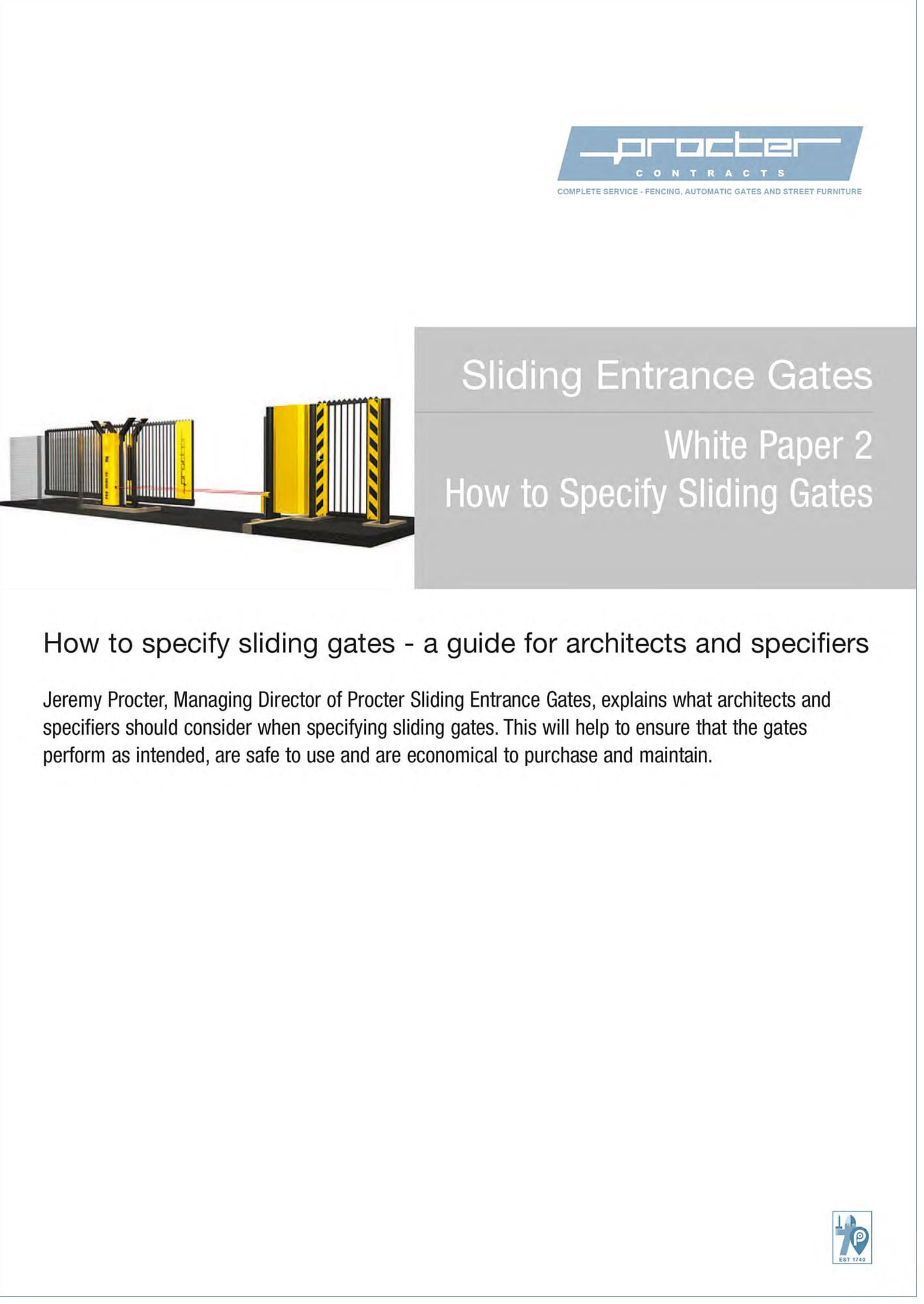How to Specify Sliding Gates in 2024
A Comprehensive guide for architects and specifiers
Introduction: Understanding the Importance of Specifying Sliding Gates
In today’s landscape, sliding gates, particularly powered and automated variants, have emerged as favoured choices for various applications owing to their security features, space efficiency, and design versatility. However, specifying sliding gates requires a nuanced approach, considering numerous factors to ensure optimal performance, safety, and cost-effectiveness. This guide aims to provide architects and specifiers with essential insights to navigate the complexities of specifying sliding gates effectively.
Swing Vs Sliding: Choosing the Right Gate for Your Project
Before delving into the specifics of sliding gate specification, it’s imperative to ascertain whether sliding gates align with the project requirements. While suppliers may tout sliding gates as universally ideal, swing gates may offer advantages in certain scenarios. Here’s a summarized overview of the key pros and cons of both gate types:
Sliding Gates Advantages:
- Enhanced security: Difficult to force open, secure appearance acts as a deterrent.
- Compact installation: Minimal space required alongside boundaries.
- Space efficiency: Suitable for wide openings, reducing mechanical and safety components.
- Adaptability: Ideal for uneven surfaces and rising roadways.
Sliding Gates Disadvantages:
- Run-back area requirement for each gate leaf.
- Guide track necessary for very wide openings, requiring periodic cleaning.
Hinged Gates:
- Marginally less costly with simpler construction.
- More vulnerable to attack and unsuitable for rising roadways.
In cases of uncertainty regarding gate selection, unbiased advice from suppliers offering both gate types is recommended.
Security: Ensuring Robust Perimeter Protection
Sliding gates often serve as integral components of perimeter security systems, alongside fencing and access controls. It’s essential to ensure that sliding gates match or exceed the security level of surrounding fencing. Factors such as gate height, infill material, and fixings significantly impact gate security. Additionally, locating the gate strategically and integrating CCTV surveillance enhance security measures.
Size and Layout: Tailoring Sliding Gates to Project Requirements
With the width of the opening often fixed, specifying gates to suit the site’s dimensions is crucial. While single-leaf gates are simpler and more cost-effective, double-leaf gates may be necessary for restricted run-back areas or larger openings. Considerations for accommodating pedestrian access alongside vehicular access are also paramount for comprehensive site planning.
Tracked or Cantilevered: Choosing the Right Configuration
Selecting between tracked and cantilevered sliding gates depends on project-specific requirements. While both configurations offer advantages, the choice may hinge on factors such as ground condition and installation complexity. Here’s a brief comparison of the main pros and cons:
Tracked Gates:
- Suitable for very wide openings.
- Less expensive to manufacture but require periodic maintenance.
- Mechanically simpler than cantilevered gates.
Cantilevered Gates:
- Ideal for uneven ground with simpler installation.
- Quieter operation with no need for clearing debris.
In the absence of a clear preference, cantilevered gates are often recommended for their advantages.
Sliding Gate Design: Designing Gates for Visual Appeal
Aesthetics play a pivotal role in gate design, ensuring suitability for various applications. Customization options such as gate infill materials, colours, and ornamental designs offer architects creative freedom while maintaining functionality and security.
Safety Requirements: Addressing Hazards and Compliance Standards
Ensuring the safety of sliding gates, particularly powered variants, is paramount and subject to stringent regulations. Compliance with relevant British and European standards is essential, with emphasis on hazard mitigation and CE marking. Various safety measures, including physical guards and warnings, reduce risks associated with sliding gates. By prioritising safety, architects and specifiers can mitigate risks and safeguard against potential liabilities.
Automation and Access Control: Enhancing Efficiency and Security
Automation offers numerous benefits in terms of security, efficiency, and convenience, with powered actuators being the norm for sliding gates. Integration with access control systems enhances operational efficiency and security measures. Various automation systems and access control options are available, catering to diverse site requirements.
Additional Considerations: Beyond the Basics
Beyond the gate itself, several ancillary factors influence the effectiveness and compliance of sliding gate installations. Factors such as adjacent fencing, lighting, and planning consent requirements merit consideration. Attention to these details ensures comprehensive gate specification aligned with project needs.
Installation and Maintenance: Ensuring Long-Term Performance
Professional installation and periodic maintenance are vital for the optimal performance and longevity of sliding gates. Accredited installers and adherence to quality management systems ensure installation integrity and safety compliance. Regular maintenance safeguards against potential issues and ensures trouble-free operation over time.
Ready to Specify Your Sliding Gates?
Empower your projects with secure, efficient, and aesthetically pleasing sliding gates. Contact Procter Sliding Gates today to discuss your requirements and benefit from our expertise in gate specification and installation.

